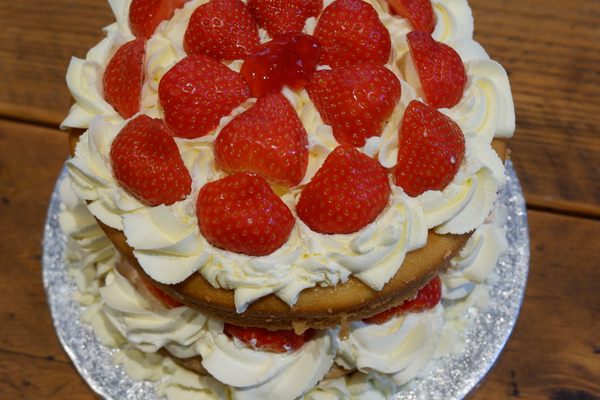A thin cardboard wrapper with pink polka dots and ruffled edging wraps around a spiraled tower of whipped cream. Atop the dairy bouffant, an electric red cherry gleams like a gemstone nested in the cloud of cream. The dainty might deign to reach for a spoon, but the right New York nana would set such false etiquette aright: The proper Empire City Charlotte Russe is not to be scooped, but pushed.
Hidden from view, at the base of the dairy mountain, is a soft sponge cake, often layered or dolloped with fresh berry filling. Despite the Charlotte Russe’s relative rarity in city patisseries today, seasoned city-dwellers look back fondly on the days when a nickel could buy this fall and winter treat. While children would come home with faces full of foam, experienced (and thrifty) eaters could savor their cup for hours, slowly licking and pushing the cardboard base upward until they finally revealed the moist cake beneath.
Though still regal in appearance, New York’s Charlotte Russe stands out from its French predecessor, Charlottes à la Russe. Most accounts point to Marie-Antoine Carême, a master of French grande cuisine, as the inventor of the original dish, possibly renamed from the original (Charlottes à la Parisienne) in honor of the visiting Russian (Russe), Czar Alexander I. The original dish, which he describes in his 19th-century cookbook, The Royal Parisian Pastry Cook and Confectioner, includes ladyfingers decoratively placed into an octagonal mold, which is subsequently filled with bavarian cream and topped with more ladyfingers. Chilled and removed from its mold, the French dish would have looked like a domed cake.
However, those who remember New York’s early cake push-pop swear that it, too, was a grand affair, complete with risk and reward. Push slowly and lick lightly, or you might end up with a lap of liquid. Perhaps it’s time to convince New York bakers that this edible art (and art of eating) is worth preserving.
Where to Try It
-
Holtermann's Bakery
405 Arthur Kill Rd., Staten Island, New York, 10308, United StatesThis Staten Island shop is one of the few remaining places to get a Charlotte Russe in the New York City area.
Written By
 Leigh ChavezBush
Leigh ChavezBush
Sources
- www.politico.com/states/new-york/albany/story/2012/02/lost-foods-of-new-york-city-charlotte-russe-067223
- whatscookingamerica.net/History/Cakes/CharlotteRusse.htm
- www.ediblemanhattan.com/magazine/remembrance_of_pastries_past/
- citylore-senseandthecity.blogspot.com/2015/09/
- books.google.com/books?id=hK7-ltOfXwEC&dq=The+Royal+Parisian+Pastry+Cook+and+Confectioner&source=gbs_navlinks_s
- www.nytimes.com/1976/11/22/archives/westchester-weekly-the-charlotte-russe-it-survives.html
- nymag.com/listings/stores/holtermanns_bakery/
- books.google.com/books?id=R1bCBwAAQBAJ&dq=charlotte+Le+p%C3%A2tissier+royal+livre&source=gbs_navlinks_s
- gallica.bnf.fr/ark:/12148/bpt6k852393j/f576.image
- books.google.com/books?id=bIIeBQAAQBAJ&dq=charlotte+parisienne+ou+a+la+russe&source=gbs_navlinks_s

















